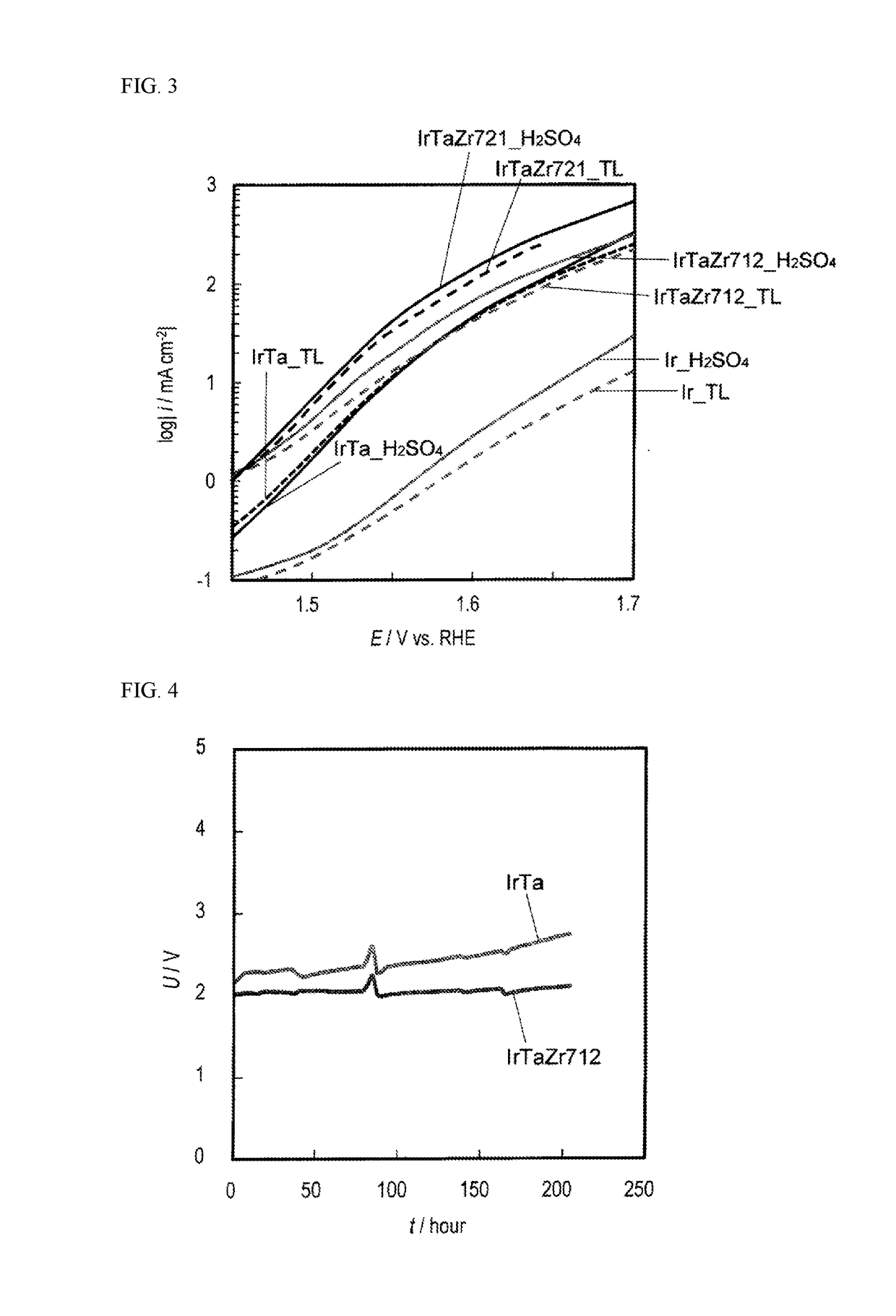Oxygen-generating anode
an anode and oxygen technology, applied in the direction of oxygen/ozone/oxide/hydroxide, electrolytic organic production, electrolysis organic production, etc., can solve the problem of requiring special tankers, affecting the efficiency of oxygen-generating anodes, etc., and achieve the effect of favorable us
- Summary
- Abstract
- Description
- Claims
- Application Information
AI Technical Summary
Benefits of technology
Problems solved by technology
Method used
Image
Examples
example 1
[Anode Substrate Pretreatment]
[0053]A Ti plate with a thickness of 3 mm was used as the anode substrate. The surface of this substrate was subjected to a dry blast treatment using an iron grid (#120 size), and the anode substrate was then subjected to an acid wash treatment for 10 minutes in a 20% sulfuric acid aqueous solution (105° C.). The washed anode substrate was set in an arc ion plating apparatus, and an arc ion plating coating of a pure titanium material was formed. The coating conditions were as follows.[0054]Target: JIS class 1 titanium circular plate (backside cooled with water)[0055]Degree of vacuum: 1.3 Pa (with Ar gas introduction and substitution)[0056]Power input: 500 W (3.0 kV)[0057]Substrate temperature: 150° C. (during arc ion plating)[0058]Time: 35 minutes[0059]Coating thickness: 2 μm (calculated as mass increase)
[0060]When an X-ray diffraction measurement was performed after arc ion plating coating, a sharp crystalline peak attributable to the substrate bulk an...
example 2
[0064]With the exception of altering the anode firing temperature to 460° C., this example was performed under all the same conditions as Example 1. The results revealed an increase in the potential of only 8 mV.
example 3
[0065]With the exception of altering the anode firing temperature to 370° C., this example was performed under all the same conditions as Example 1. The results revealed an increase in the potential of only 8 mV.
PUM
| Property | Measurement | Unit |
|---|---|---|
| concentration | aaaaa | aaaaa |
| thickness | aaaaa | aaaaa |
| thickness | aaaaa | aaaaa |
Abstract
Description
Claims
Application Information
 Login to View More
Login to View More - R&D Engineer
- R&D Manager
- IP Professional
- Industry Leading Data Capabilities
- Powerful AI technology
- Patent DNA Extraction
Browse by: Latest US Patents, China's latest patents, Technical Efficacy Thesaurus, Application Domain, Technology Topic, Popular Technical Reports.
© 2024 PatSnap. All rights reserved.Legal|Privacy policy|Modern Slavery Act Transparency Statement|Sitemap|About US| Contact US: help@patsnap.com










